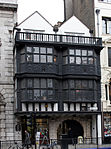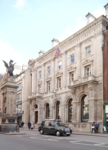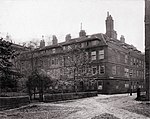Rainbow Coffee House
The Rainbow Coffee House was a famous coffee house located at 15 Fleet Street, London. It was opened by James Farr in 1657, becoming London's second coffee house.The Rainbow provided a meeting place for freemasons and French refugee Huguenots who established an information centre there. The Rainbow was also featured in the furore created by Titus Oates, who accused Sir Philip Lloyd of denying the existence of a popish plot there, finding witnesses from amongst the coffee drinkers to testify against himIn 1719 John Woodward wrote a satire The Two Sosias: Or, the True Dr. Byfield at the Rainbow Coffee-House, to the Pretender in Jermyn-Street David Hughson wrote in 1807 that the Rainbow was replaced by Nando's Coffee House in the same building, later in the 17th century.
Excerpt from the Wikipedia article Rainbow Coffee House (License: CC BY-SA 3.0, Authors).Rainbow Coffee House
Fleet Street, City of London
Geographical coordinates (GPS) Address Nearby Places Show on map
Geographical coordinates (GPS)
| Latitude | Longitude |
|---|---|
| N 51.5137 ° | E -0.1111 ° |
Address
Kall Kwik
Fleet Street
EC4A 2LT City of London
England, United Kingdom
Open on Google Maps











